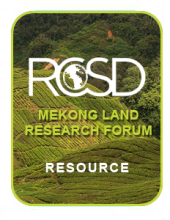Land Library
Welcome to the Land Portal Library. Explore our vast collection of open-access resources (over 74,000) including reports, journal articles, research papers, peer-reviewed publications, legal documents, videos and much more.
/ library resources
Showing items 1108 through 1116 of 1147.Corresponding to the characteristics of multi-discipline and multi-level management, land administration always requires and acquires spatial data at very different spatial and thematic resolution.
Recent debates about governance, poverty and environmental sustainability have emphasized a ‘‘rights-based’’ approach, in which equitable development is strongly associated with individual and communal rights.
The short review of the space protection efficiency in European countries and in Serbia has been given.
Berlin’s unification in the last 12 years was not only a political, social or civil task to be solved, but it was essential to go with a readable and coherent urban structure.
In this paper, the capitalization, urban land management and planning routine have been explored. The focus dwells on the praxis and urban planning perspectives as a link and means for realizing the public interest in space and the role of 'urban transplants' as a lever of urban development.
"Logging in Muddy Waters" analyzes the boom in forest exploitation that characterized the 1990s in Cambodia, focusing on the instrumentalization of disorder and violence as a mode of control of forest access and timber-trading channels.
As elsewhere in the ex-communist/socialist countries, the former planning system in Yugoslavia has been dismantled as from the beginning of 1990s, and the planning practice has from then onwards been steered by an apart mixture of old habits, few institutional innovations and the social, economic
Se trata de identificar los efectos territoriales y urbanísticos verificados con la transformación de la antigua Ruta 5 en una vía de peaje y accesos controlados y contrastarlos con la previsión y objetivos asignados comúnmente a un proyecto de esta naturaleza.
Siempre que el aumento de la velocidad fuera proporcional con el aumento de la riqueza territorial, medida en sus índices de extracción y elaboración, se mantendría el equilibrio en las funciones económicas de los núcleos poblados, pero hasta la fecha [1936] y particularmente en territorios de co


